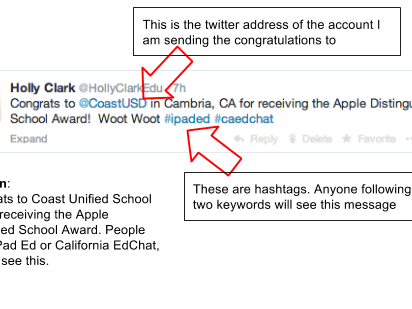This post first appeared on Edudemic.
What is a backchannel you ask?
A backchannel is a conversation that takes place alongside an activity or event. In most cases, this happens using a digital or mobile device. There are many different ways you can backchannel. You could use Twitter, Today’s Meet, or Google Moderator just to name a few. Having a backchannel is a great way to open up a conversation to all students in class and expand on any discussion.
Benefits of a Backchannel
- It can provide quieter students with a place to ask questions without having to raise their hand in class.
- Teachers can share resources such as videos, photos, helpful links, and answers to questions about the subject without having to stop the flow of learning.
- It can supplement and enhance classroom discussions.
- Allows students who rarely raise a hand to express themselves via a medium they find completely engaging.
- Allows students to use their mobile devices in an information, oriented way.
Twitter As A Backchannel
After attending conferences, and experiencing the power of a backchannel on Twitter, I liked the idea so much that I set out to do it in my classroom. What happened next was beyond my wildest imagination. Adding Twitter to our reading of The Outsiders turned into an impactful experience. What evolved were some of the richest conversations that I had ever experienced while reading this book. Here is how it unfolded:
Picking the Hashtag
Before I could begin, I had to decide on a hashtag. With social media – Twitter, Instagram, Facebook, etc – hashtags (the # symbol) mark keywords or topics as a way to categorize messages. In order to do this activity, I had to choose a hashtag that no one else was using so that we could categorize our conversation and separate out our backchannel tweets from the rest of the world’s conversation.
Since #Outsiders150 was an open hashtag, and made sense as a categorization of our book, it was time to begin. First, I gave a simple lesson on Twitter and hashtags to my students. The lesson was quick because 85% of my students were already on Twitter. However, to ensure that I reached all learners, I put together a supplemental YouTube playlist that I had curated on the basics of twitter for those who needed additional help. Along with explaining hashtags, my Twitter lesson included a look at the anatomy of a tweet to help fill in the gaps that students inevitably had about effective tweeting.
Lessons in Digital Citizenship
Before jumping into the Twittersphere, we needed to do some digital citizenship front loading. Together we came up with ten criteria for effective tweeting and “norms” that we thought would keep the conversation on task and focused. This lesson in acceptable use, had to be done collaboratively to get student buy-in on friendly tweeting, which it did. Due to this part of the lesson, there were not really any problems in this activity associated with inappropriate tweets.
Reading and Tweeting
After the lessons in Twitter and digital citizenship, it was time to read The Outsiders. As we began reading the book, students were allowed to use their phones to tweet about the reading. Students without phones, used a computer. Here is a sample of one of the tweets that fueled a complete redesign of our understanding of the book’s theme and our sharing of ideas.The Outsiders, it is about social interactions and bridging the gap between people – based on differences. So when one student tweeted #don’tjudge, It was a powerful indication that they were getting the theme of the book.
The Retweet Effect
The student, Sam, tweeted something pretty personal and that was retweeted over 150 times, which is social media’s way of showing that everyone involved agreed with his message and were most likely understanding the story. His tweet helped all of us in the class to get to know him better – and the theme of the book – in an entirely different way than a simple class discussion would have allowed us in the past. Since that student rarely spoke up in class, this was an eye opening experience for all of us. Tweeting gave him a voice he had not used in class before. The experience fueled a rich discussion on twitter and intangibly gave the other students permission to go deeper and to say things they might not have – without that sacrificial-like tweet. From that point on, I watched as kids commented on ideas they might otherwise not have, and got chills watching students being completely immersed in the message of the book, so they could tweet more effectively and creatively about it. It was almost magical.
Next time you wonder if Twitter might be right for the classroom, remember this unexpected story. Think of the voices you might get to hear when you give all students the tool to have a voice – and backchanneling might be the perfect tool to let that happen in your classroom.
Holly a will be speaking about this topic, and others at the upcoming EdTechTeacher Summit in July. EdTechTeacher will also be offering Summer Workshops in Atlanta, Austin, Berkeley, Cambridge, Chicago, and Los Angeles focused on tools that transform teaching.


